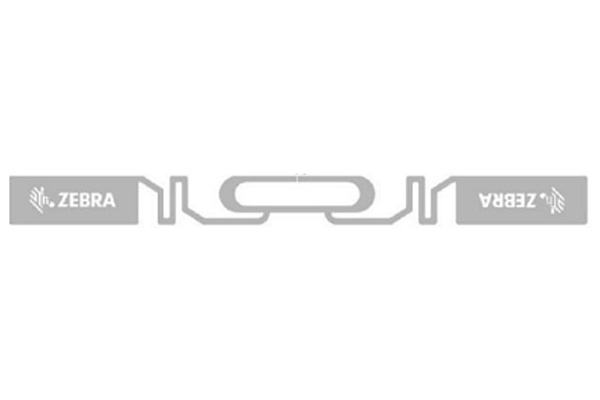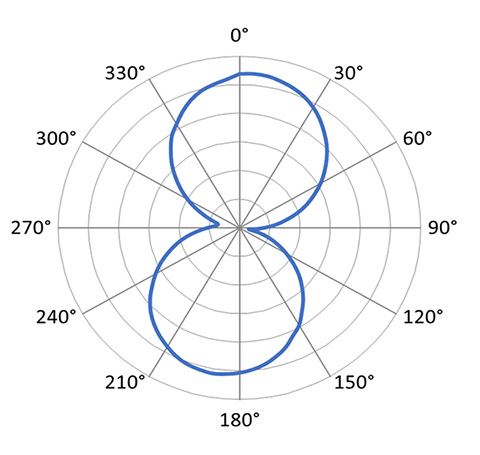Transform retail operations with Zebra’s retail technology solutions, featuring hardware and software for improving inventory management and empowering teams.
Streamline operations with Zebra’s healthcare technology solutions, featuring hardware and software to improve staff collaboration and optimise workflows.
Enhance processes with Zebra’s manufacturing technology solutions, featuring hardware and software for automation, data analysis, and factory connectivity.
Zebra’s transportation and logistics technology solutions feature hardware and software for enhancing route planning, visibility, and automating processes.
Zebra's public sector technology solutions enhance decision-making, streamline operations, and safeguard communities with advanced software and rugged hardware.
Zebra's hospitality technology solutions equip your hotel and restaurant staff to deliver superior customer and guest service through inventory tracking and more.
Zebra's market-leading solutions and products improve customer satisfaction with a lower cost per interaction by keeping service representatives connected with colleagues, customers, management and the tools they use to satisfy customers across the supply chain.
Empower your field workers with purpose-driven mobile technology solutions to help them capture and share critical data in any environment.
Zebra's range of mobile computers equip your workforce with the devices they need from handhelds and tablets to wearables and vehicle-mounted computers.
Zebra's desktop, mobile, industrial, and portable printers for barcode labels, receipts, RFID tags and cards give you smarter ways to track and manage assets.
Zebra's 1D and 2D corded and cordless barcode scanners anticipate any scanning challenge in a variety of environments, whether retail, healthcare, T&L or manufacturing.
Zebra's extensive range of RAIN RFID readers, antennas, and printers give you consistent and accurate tracking.
Choose Zebra's reliable barcode, RFID and card supplies carefully selected to ensure high performance, print quality, durability and readability.
Zebra's rugged tablets and 2-in-1 laptops are thin and lightweight, yet rugged to work wherever you do on familiar and easy-to-use Windows or Android OS.
With Zebra's family of fixed industrial scanners and machine vision technologies, you can tailor your solutions to your environment and applications.
Zebra’s line of kiosks can meet any self-service or digital signage need, from checking prices and stock on an in-aisle store kiosk to fully-featured kiosks that can be deployed on the wall, counter, desktop or floor in a retail store, hotel, airport check-in gate, physician’s office, local government office and more.
Adapt to market shifts, enhance worker productivity and secure long-term growth with AMRs. Deploy, redeploy and optimize autonomous mobile robots with ease.
Discover Zebra’s range of accessories from chargers, communication cables to cases to help you customise your mobile device for optimal efficiency.
Zebra's environmental sensors monitor temperature-sensitive products, offering data insights on environmental conditions across industry applications.
Zebra's location technologies provide real-time tracking for your organisation to better manage and optimise your critical assets and create more efficient workflows.
Enhance frontline operations with Zebra’s AI software solutions, which optimize workflows, streamline processes, and simplify tasks for improved business outcomes.
Zebra Workcloud, enterprise software solutions boost efficiency, cut costs, improve inventory management, simplify communication and optimize resources.
Keep labour costs low, your talent happy and your organisation compliant. Create an agile operation that can navigate unexpected schedule changes and customer demand to drive sales, satisfy customers and improve your bottom line.
Drive successful enterprise collaboration with prioritized task notifications and improved communication capabilities for easier team collaboration.
Get full visibility of your inventory and automatically pinpoint leaks across all channels.
Reduce uncertainty when you anticipate market volatility. Predict, plan and stay agile to align inventory with shifting demand.
Drive down costs while driving up employee, security, and network performance with software designed to enhance Zebra's wireless infrastructure and mobile solutions.
Explore Zebra’s printer software to integrate, manage and monitor printers easily, maximising IT resources and minimising down time.
Make the most of every stage of your scanning journey from deployment to optimisation. Zebra's barcode scanner software lets you keep devices current and adapt them to your business needs for a stronger ROI across the full lifecycle.
RFID development, demonstration and production software and utilities help you build and manage your RFID deployments more efficiently.
RFID development, demonstration and production software and utilities help you build and manage your RFID deployments more efficiently.
Zebra DNA is the industry’s broadest suite of enterprise software that delivers an ideal experience for all during the entire lifetime of every Zebra device.
Advance your digital transformation and execute your strategic plans with the help of the right location and tracking technology.
Boost warehouse and manufacturing operations with Symmetry, an AMR software for fleet management of Autonomous Mobile Robots and streamlined automation workflows.
The Zebra Aurora suite of machine vision software enables users to solve their track-and-trace, vision inspection and industrial automation needs.
Zebra Aurora Focus brings a new level of simplicity to controlling enterprise-wide manufacturing and logistics automation solutions. With this powerful interface, it’s easy to set up, deploy and run Zebra’s Fixed Industrial Scanners and Machine Vision Smart Cameras, eliminating the need for different tools and reducing training and deployment time.
Aurora Imaging Library™, formerly Matrox Imaging Library, machine-vision software development kit (SDK) has a deep collection of tools for image capture, processing, analysis, annotation, display, and archiving. Code-level customisation starts here.
Aurora Design Assistant™, formerly Matrox Design Assistant, integrated development environment (IDE) is a flowchart-based platform for building machine vision applications, with templates to speed up development and bring solutions online quicker.
Designed for experienced programmers proficient in vision applications, Aurora Vision Library provides the same sophisticated functionality as our Aurora Vision Studio software but presented in programming language.
Aurora Vision Studio, an image processing software for machine & computer vision engineers, allows quick creation, integration & monitoring of powerful OEM vision applications.
Adding innovative tech is critical to your success, but it can be complex and disruptive. Professional Services help you accelerate adoption, and maximise productivity without affecting your workflows, business processes and finances.
Zebra's Managed Service delivers worry-free device management to ensure ultimate uptime for your Zebra Mobile Computers and Printers via dedicated experts.
Find ways you can contact Zebra Technologies’ Support, including Email and Chat, ask a technical question or initiate a Repair Request.
Zebra's Circular Economy Program helps you manage today’s challenges and plan for tomorrow with smart solutions that are good for your budget and the environment.
You're up next!
Connecting....
END CHAT?
Don't worry, after the chat ends, you can save the transcript. Click the agent name in the header and then click Save Transcript.
Sorry your session has expired due to 30 minutes of inactivity. Please start a new chat to continue.
Chat Ended
ZBR2100-E
Paper-based RFID Inlay
Most RFID inlays are manufactured using aluminum which is chemically etched on a PET carrier and is not recyclable with the paper label it is applied to. By switching to paper-based RFID inlays, manufactured using antennas made by laser cutting technology, they are not only sustainable and 100% plastic-free, but they also offer less waste and up to 90% smaller carbon footprint compared to using PET materials. The ZBR2100-E is a paper-based RFID inlay that can help your business reach its sustainability goals. Designed with the latest high-sensitivity UCODE 9 chipset, the ZBR2100-E delivers a high read range of up to 19 meters.

Environmentally Friendly and 100% Plastic-Free
The ZBR2100-E is a 100% plastic-free, paper-based inlay with laser cut antenna, saving resources during manufacturing such as water, energy and greenhouse gases. When combined with fiber-based materials such as paper packaging, it may not* need to be removed for the packaging to be recycled, reducing the amount of waste going into landfill.
High Sensitivity
Designed with the latest high sensitivity UCODE 9 chipset, the ZBR2100-E can deliver high read ranges of up to 19 meters.
Destructible Inlay
The paper inlay is thinner than typical PET inlays. When combined with an appropriate face material and label, such as the Z-Select 2000T, the ZBR2100-E can contribute to providing a tamper-evident labeling solution.
Print Confident. Print Quality. Print Zebra.
Printing supplies can impact everything from printhead lifespan to operational efficiency. That’s why we design, produce and rigorously test our own line of thermal printing supplies to ensure consistent, optimized performance. We utilize an ISO 9001 certified, 23-point quality inspection to ensure consistent quality. No matter when you order your labels you can count on the same great performance.
Reduce plastic usage with the paper-based ZBR2100-E RFID Inlay.
For more information please visit, www.zebra.com/rfidlabels
Specifications
Technical Information
Chip | NXP UCODE 9 |
| EPC Memory | 96-bit |
| User Memory | N/A |
| TID | 96 bit factory locked (48 bit unique) |
| Read Sensitivity | -24 dBm |
| Write Sensitivity | -22 dBm |
| RFID Standards | EPC Gen2v2 |
| Read Range | Up to 19 m in free space |
Theoretical Read Range: ETSI (865-868 MHz)**
| Air | 11 m |
| Cardboard | 18 m |
| Fiberglass | 10 m |
| Glass | 8 m |
| PTFE | 19 m |
| Polyacetyl | 12 m |
| PVC | 13 m |
| Rubber | 8 m |
Theoretical Read Range: FCC (902-928 MHz)**
| Air | 19 m |
| Cardboard | 15 m |
| Fiberglass | 11 m |
| Glass | 12 m |
| PTFE | 13 m |
| Polyacetyl | 11 m |
| PVC | 14 m |
| Rubber | 12 m |
Testing and Compliance
| All inlays certified by Zebra have been pre-tested with Zebra printers and readers. |
Material Testing in End Application
| The information contained in this document is to be used for guidance only and is not intended for use in setting specifications. All purchasers of Zebra products shall be solely responsible for independently determining if the product conforms to all requirements of their unique application. All products should be pre-tested to ensure they meet all intended requirements of specific end-use applications. |
Warranty
| Supplies are warranted against defects in workmanship and materials for a period of 1 (one) year from the date of shipment. For the complete warranty statement, please visit: www.zebra.com/warranty |
Product Performance and Suitability
Operating Temperature: -40°C/+85°C |
Footnotes
* Check local recycling capabilities. |
Radiation Pattern
Read range drops to 25% of maximum when inlay is perpendicular (90º and 270º) to the reading antenna. To learn more about Radiation Pattern visit |

Markets and Applications
Logistics
- Case/pallet labeling
Manufacturing
- Work in process labeling
Other
- Security labeling

ZEBRA and the stylized Zebra head are trademarks of Zebra Technologies Corp., registered in many jurisdictions worldwide. All other trademarks are the property of their respective owners. ©2025 Zebra Technologies Corp. and/or its affiliates.
04/22/2022 HTML
Legal Terms of Use Privacy Policy Supply Chain Transparency
ZEBRA and the stylized Zebra head are trademarks of Zebra Technologies Corp., registered in many jurisdictions worldwide. All other trademarks are the property of their respective owners. ©2025 Zebra Technologies Corp. and/or its affiliates.

